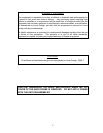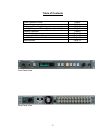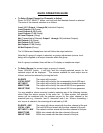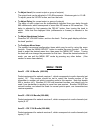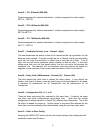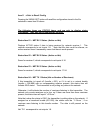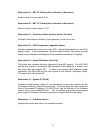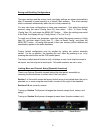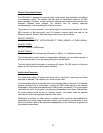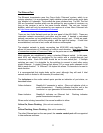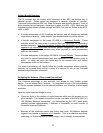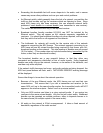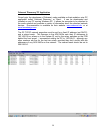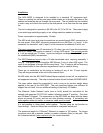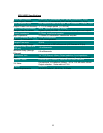6
Item 04 – TX 1-8 Bundle (000-999)
Packet assignment for network transmitter 1, which corresponds to audio outputs
NET 01 – NET 08.
Item 05 – TX 9-16 Bundle (000-999)
Packet assignment for network transmitter 2, which corresponds to audio outputs
NET 09-NET 16.
Item 06 – TX 17-24 Bundle (000-999)
Packet assignment for network transmitter 3, which corresponds to audio outputs
NET 17 – NET 24.
Item 07 – Conductor Priority (Low – Normal – High)
This item determines the priority of this unit to operate as the 'sync generator' for the
Ethernet audio network. It should normally be set to 'Normal' unless you specifically
want this unit to be the conductor, in which case it could be set to high. If set to
high, this unit will be the conductor unless another is also set high. In the case
where more than one unit has equal priority, the first unit active will assume the
conductor role. This selection isn't too important, since the network will quickly re-
negotiate a new conductor if the current conductor were to fail or be turned off.
Item 08 – Delay Units (Milliseconds – Frames (30) – Frames (25))
This item selects the units used to display the delay values. It only affects the
display, and if set to Frames, saves the user having to do the arithmetic in his head.
It assumes 33 milliseconds for 30 Frames/sec, and 40 milliseconds for 25
Frames/sec.
Item 09 – Configuration File (1, 2, or 3)
There are three user setup files, selected by this menu item. If desired, the users
can store and recall configurations using these files. Note that the current
configuration is always stored in a 'default' file, different from these three. This is the
file which is loaded on power-up. Configs stored in the three files selected by this
menu item must be manually stored and recalled, using the next two menu items.
Item 10 - <Set> to Save Config
Pressing the 'MENU SET' button will store the current setup in the configuration file
selected in menu item 09 above.




